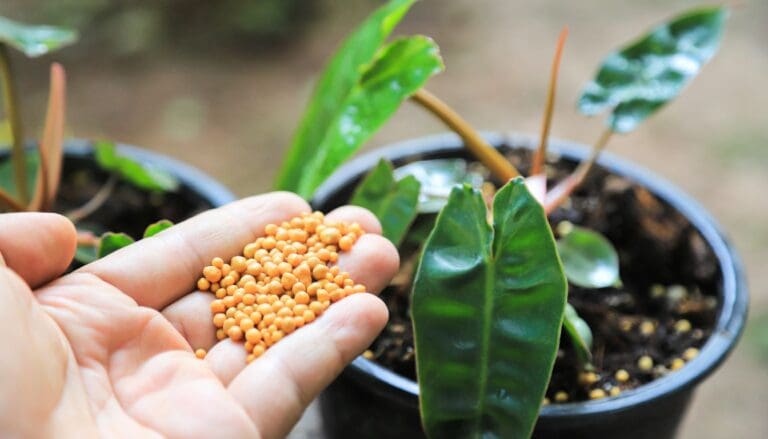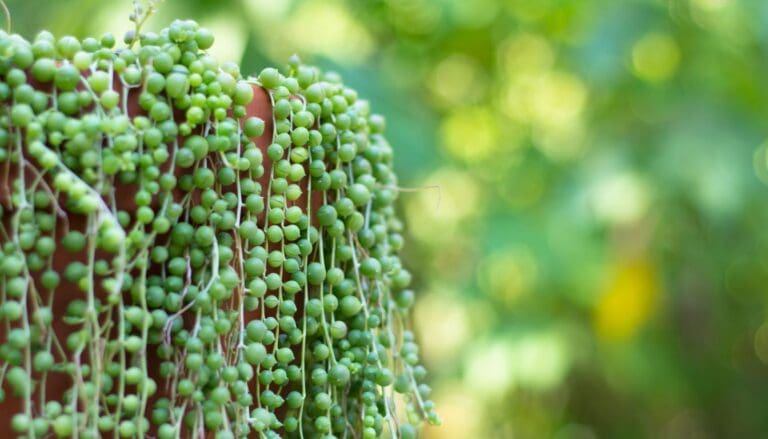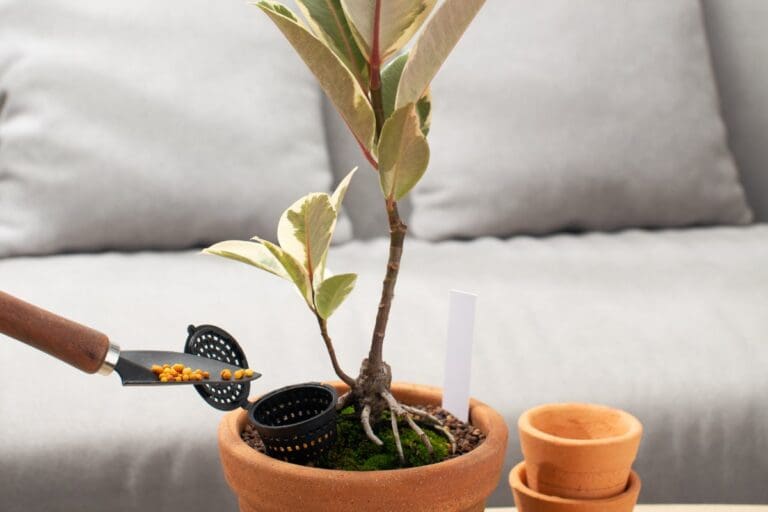Should I Mist My Spider Plant? (+Humidity Guide)
Spider plant originates from the southern part of Africa where they dwelled in a lush green tropical forest. Coming from the warm and humid background, people in the community often suggest misting the spider plants for good growth. But do spider plants like to be misted? Let’s find out!
You can mist your spider plants occasionally. People often mist their plants so that they can interact with them. Misting raises the humidity level for a short period that doesn’t help the plant much; instead, it can lead to pest and fungal growth issues. Consider adding a humidifier to raise the humidity level.
Whether you are pro-misting or against it, the most important thing we want to achieve is high humidity levels so that our spider plant can thrive.
And if you are one of them who is struggling with humidity problems and want to fix the same, then I would encourage you to read this article till the end.
In this article, we have shared some tried and tested methods that we have used to raise the humidity level of space effectively.

Please note: Simplify Plants is reader-supported. Some links in the post are affiliate links and I get a commission from purchases made through links in the post.
Do spider plants like to be misted?
Spider plants thrive in a warm and humid environment, but that doesn’t mean they want to remain wet at all times. To understand this better, let us understand how nature works.
In a warm tropical forest, air circulation is quite good. That allows the water droplets in the air to disperse and move quickly, so the leaves and foliage of the plant don’t remain wet at all times. But still, the humidity level of the place is high enough for the plants to thrive.
But when you keep your spider plant in an enclosed space where the humidity level is below 40%, misting won’t help much. But why?
The air in the room is really dry, and as soon as you mist the plant, the water droplets will start evaporating, and within a matter of minutes, they will dissipate and spread around without helping much with the humidity.
You can still mist your plant if the humidity level is below average, but that alone won’t help them thrive. We need to look for other alternatives as well. But before that, let’s understand the other scenario when the humidity level of the space is above average.
If the humidity level of the space is 60% or above and you start misting your plant, then it can be counterproductive for your plant.
Since the air is already saturated, the water droplet will slowly evaporate, raising the humidity level slightly. Now, that might sound helpful for your plants.
But in reality, it is the opposite. Since our home’s air circulation is not that well compared to their natural environment, the water droplets will make the foliage wet, which can attract pests and fungal diseases.
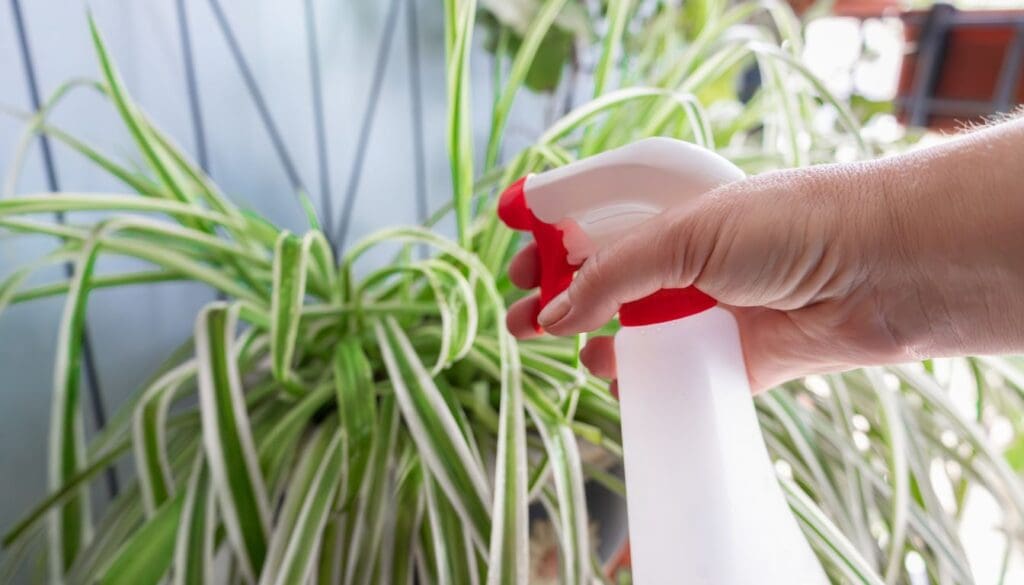
I also reached out to the community of experts to take their feedback on the same, and I was surprised by the mixed feedback. While some people were against misting, others were in support of it. Let us see the key points they suggested:
| Pro-Misting | Against Misting |
|---|---|
| Helps with humidity | Humidity last’s for just a few minutes and doesn’t help much. |
| Helps clean the foliage and leaves | Can spread pests and diseases |
| Misting with a mix of neem oil can help prevent pest infestation | Misting can lead to leaf damage. |
I hope, after listening to both of their suggestion and understanding how humidity and misting works, you can make a judgment call on your own.
But wait! Just because you chose to mist or avoid it altogether doesn’t solve the purpose. We want our spider plant to thrive, and for that, we should provide them with appropriate humidity levels.
Thus, we need to understand how to effectively raise the humidity level of our space, and that is what we shall discuss moving forward.
Does spider plant like humidity?
Originating from a warm and humid climate, spider plant does prefer moderate to high humidity levels. But why is humidity level so crucial for the growth of the plant? Let us dive into the science behind it.
The humidity level of the space plants a vital role in the photosynthesis process of a tropical plant. Most tropical plants, including the spider plant, transpire during the process of photosynthesis.
In layman’s terms, transpiration is the process of air exchange in plants that it does during the process of photosynthesis. But what does air exchange has to do with the humidity of the space?
The answer to this is quite simple. If your room’s humidity level is low and plants open their pores to transpire, they will lose a lot of water stored in their leaves. That can lead to dehydration in the plant.
However, if the humidity level is medium-high, the air in the room is already saturated, and thus your plant won’t lose much moisture during the process of transpiration.
So, we can conclude that low humidity can affect the process of photosynthesis in plants because they will not transpire, and as a result, they won’t be able to produce their food that is crucial for the growth and survival of the plant.
Ideal humidity for spider plant
The ideal humidity level for a spider plant is 60% or above. The spider plant is a versatile plant that can survive in a wide range of humidity.
If the temperature is maintained at 60°F-80°F, then they can grow at a humidity level as low as 40%. However, these plants prefer to stay in a humid environment and show better growth in such conditions.
Signs your spider plants need more humidity
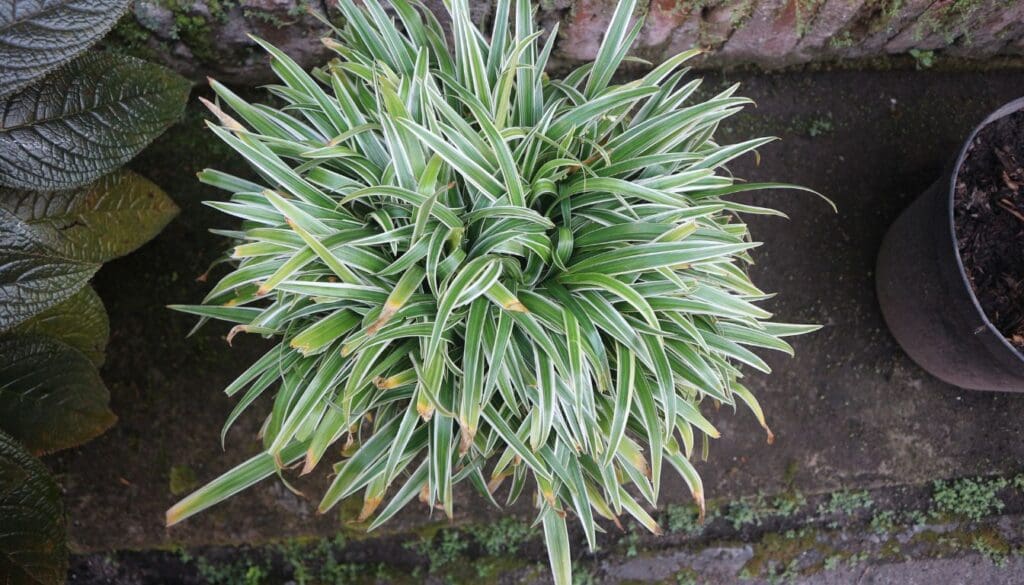
If your spider plant doesn’t get an appropriate cultural environment, including the humidity and temperature, then they are likely to suffer. Some signs of low humidity levels in spider plants are:
- Brown edges on the leaves
- Crisp leaves
- Yellowing of new leaves
- Curling of leaves
- New leaves start drooping
Most of these problems are an indicator of unacceptable humidity levels. If other care needs are adequately met, then you might want to look at the humidity level of your room.
You can use a hygrometer to measure the humidity level of the space.
How to keep spider plant humid?
Misting your houseplants and using a pebble tray is all you will hear when you talk about humidity in the community. But does all this help? Yes, they do, but not so much.
You cannot save a wilting spider plant just by misting them or adding a pebble tray beneath it. These tricks might help if the humidity level in your room is already above average.
However, if the humidity level is below average, you need to take additional measures to ensure your plant remains healthy and booming.
Add a mini greenhouse
A mini greenhouse can help retain moisture but also adds to the decor of the house. You can either buy it online or do a small DIY build.
I personally loved this small glass box, as it works as decor and serves the purpose.
The mini greenhouse can help create a mini-environment of their own, which helps demanding tropical plants to thrive.
A quick note of caution: Keep tropical plants separate from low humidity plants. Mixing them together can be a terrible idea for all of them.
Consider adding a small aquarium to increase the humidity level of the room
You can consider adding a small-medium size aquarium in the room to raise the humidity levels naturally. The aquarium acts as a body of water in nature. The water in the aquarium will slowly evaporate, raising the moisture level in the air, which will raise the humidity levels.
The aquarium will not only serve as a decor centerpiece but provide fertilizer to the plant. The water from the aquarium can be used to fertilize the plants as it is rich in nitrogen, which is crucial for the plant’s growth.
A reptile terrarium like this one will also serve the purpose.
Use a humidifier to maintain the humidity level
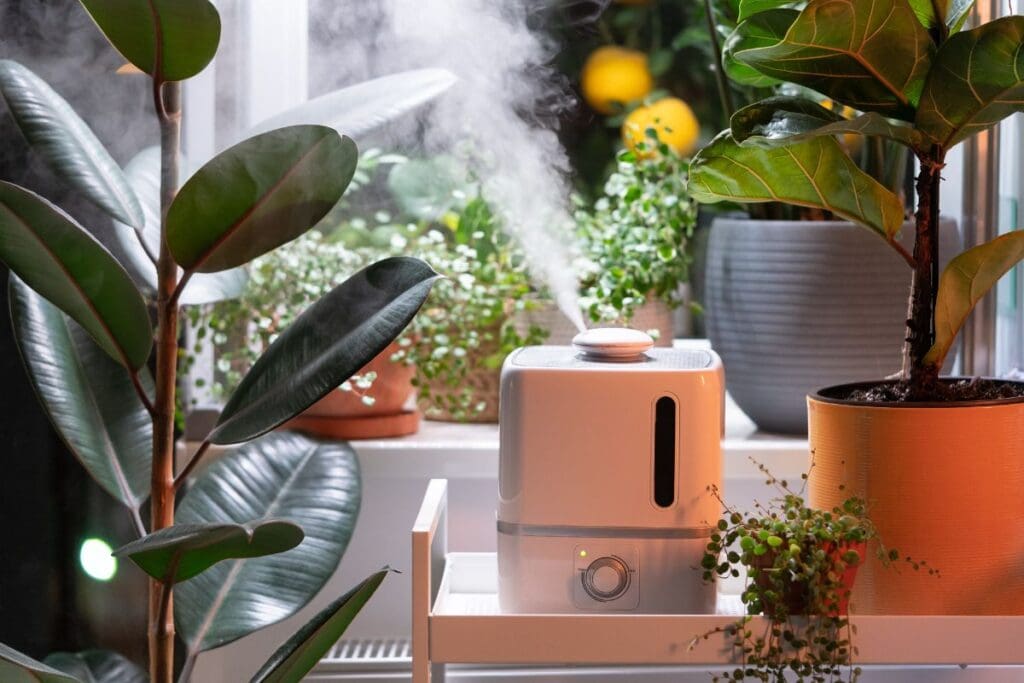
Investing in a good quality humidifier will go a long way for the healthy growth of your houseplants. Most tropical plants prefer medium-high humidity levels that can be tough to achieve.
But using a good quality humidifier can help in raising the humidity level by a marginal amount. I personally love this excellent humidifier that I found on amazon.
A quick note: Always choose an appropriate size humidifier for your room.
Keep your plants grouped together
Grouping all tropical plants together is a common practice that seems to help with the humidity levels. But how does it work?
The science behind it is really simple and straightforward. Most tropical houseplants release a small amount of moisture in the air as they transpire.
When grouped tightly, most houseplants can benefit each other as they add a small amount of humidity to the environment.
However, you must be careful while grouping them, and you must never group low humidity plants with that of higher humidity.
Lower the temperature of the room

If you live in an area where temperature levels are extremely high, then cooling the space can help with the humidity levels.
According to a study, warmer air tends to hold less moisture than cooler air. If by any means, you can lower your space’s temperature, you can increase the humidity levels more quickly.
However, you must not change the temperature all of a sudden. Make sure you drop it slowly and keep it at an appropriate level for your plants.
A sudden drop in temperature can stress the plant that can impact the plant’s health and growth. However, lowering it by a little bit might help with managing the humidity of the room.
Conclusion

Is misting your spider plant a good idea? You can mist your spider plant occasionally, but you shouldn’t be doing it daily.
If your spider plant’s foliage remains wet at all times, then pest and fungal problems are likely to bother your plant.
Misting alone won’t help your spider plant thrive. You need to take additional measures to maintain the ideal humidity level around your plant.
Although spider plants can grow even against all odds, they still prefer to stay in a warm and humid climate. You should aim to provide them with a humidity level above 60% for them to thrive.
Source: Growing Indoor Plants with Success, Evapotranspiration from Spider Plants, Spider Plants INTRODUCTION.
Recommended Garden Supplies
| Product Image | Our Recommended Gardening Supplies | Check Offers! |
|---|---|---|
Top Top
Top
Top
Top
Top
Top
Top
Top | rePotme Houseplant and Tropical Classic Potting Soil Mix | Check Offer On Amazon |
 Top
Top
Top
Top
Top
Top
Top
Top | Espoma Organic Indoor Plant Food | Check Offer On Amazon |
 Top
Top
Top
Top
Top
Top
Top
Top | GooingTop LED Grow Light 6000K Full Spectrum Clip Plant Growing Lamp | Check Offer On Amazon |
 Top
Top
Top
Top
Top
Top
Top
Top | Soil Moisture Meter | Check Offer On Amazon |
 Top
Top
Top
Top
Top
Top
Top
Top | Govee Hygrometer Thermometer, Bluetooth Enabled! | Check Offer On Amazon |
 Top
Top | LEVOIT Humidifiers for Large Room(Best For Plants) | Check Offer On Amazon |
 Top
Top
Top
Top
Top
Top
Top
Top | Upgraded DIY Automatic Drip Irrigation Kit, 15 Potted Houseplants Support | Check Offer On Amazon |
 Top
Top
Top
Top
Top
Top
Top
Top | Stainless Steel Heavy Duty Gardening Tool Set | Check Offer On Amazon |
 Top
Top
Top
Top
Top
Top
Top
Top | Bonide Insecticidal Soap | Check Offer On Amazon |
 Top
Top
Top
Top
Top
Top
Top
Top | Bonide 32 oz Spray Neem Oil for Organic Gardening | Check Offer On Amazon |
 Top
Top
Top
Top
Top
Top
Top
Top | Garden Safe Fungicide | Check Offer On Amazon |

